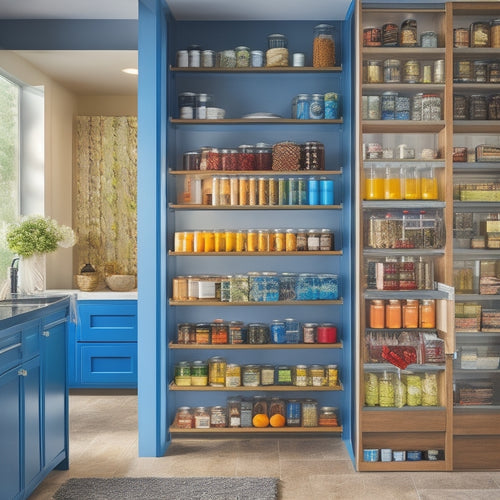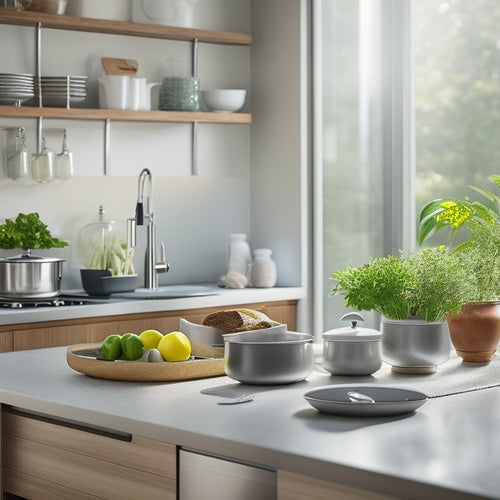
Boost Food Safety With Restaurant Inspection Template
Share
Implementing a thorough restaurant inspection template is essential to guaranteeing food safety and preventing potential health hazards. A well-structured template helps maintain food safety standards by educating staff on proper food handling techniques, temperature monitoring, and preventing cross-contamination. Regular inspections aid in identifying and rectifying potential hazards, while a clean environment is vital for food safety and hygiene standards. By using a tailored checklist, restaurants can establish a frequent checking schedule, implement corrective actions, and maintain a clean environment through regular cleaning schedules and pest control measures. Discover the key elements to include in your restaurant inspection template to ensure a safe and healthy dining experience.
Key Takeaways
• Utilize a comprehensive restaurant inspection template to ensure consistent evaluation of food safety standards and identify potential hazards.
• Conduct regular inspections, such as weekly or monthly, to maintain a high level of food safety and hygiene standards.
• Implement a corrective action plan to address any issues identified during inspections, and ensure employee accountability.
• Train staff on proper food handling, storage, and preparation techniques to prevent cross-contamination and foodborne illnesses.
• Regularly review and update the inspection template to reflect changing regulations and industry best practices.
Ensuring Food Safety Standards
Maintaining food safety standards is a top concern for restaurants, as it directly impacts the well-being of customers and the reputation of the establishment.
To guarantee compliance, restaurants must prioritize proper food handling techniques, which can be achieved through thorough staff training. This includes educating employees on correct food storage practices, such as maintaining appropriate refrigeration temperatures, labeling and dating frozen items, and preventing cross-contamination.
Temperature monitoring is also essential, as it helps to identify potential hazards and prevent foodborne illnesses.
Conducting Regular Inspections
Regular checks are a vital component of a restaurant's food safety strategy, as they enable the identification and rectification of potential hazards before they compromise customer well-being. To effectively conduct checks, establish a regular checking frequency, such as weekly or monthly, and utilize an all-encompassing checking checklist that covers critical areas like food storage and handling, personal hygiene, and cleaning and sanitization.
This checklist should be tailored to the restaurant's specific needs and operations. Additionally, provide staff training on the importance of checks and their role in maintaining food safety standards. Following checks, implement corrective actions to address any identified issues, and make sure that staff understand the necessary steps to prevent future occurrences.
Maintaining a Clean Environment
A clean environment is essential to a restaurant's food safety and hygiene standards, as it directly impacts the risk of contamination and the spread of foodborne illnesses. To maintain a clean environment, restaurants must establish and adhere to hygiene protocols and sanitization practices. This includes regular cleaning schedules, using food-safe cleaning products, and proper dishwashing procedures.
Employee training on cleaning and sanitization practices is also vital to guarantee that staff understand the importance of maintaining a clean environment. Moreover, restaurants should implement pest control measures to prevent the spread of diseases.
Frequently Asked Questions
Can Digital Forms Be Customized to Fit Our Restaurant's Specific Needs?
Like a master chef tailoring a recipe, digital forms can be finely tuned to fit your restaurant's unique needs, offering robust customization options, but beware of implementation challenges that can simmer beneath the surface, threatening to boil over.
How Do I Ensure All Staff Members Understand the Inspection Checklist?
To make sure all staff members understand the inspection checklist, provide thorough staff training on the checklist implementation, review the inspection process together, and maintain open communication to clarify any doubts or concerns.
Are There Any Specific Regulations for Food Storage in Refrigerators?
'Building a solid foundation, like a sturdy brick wall, requires attention to detail. Refrigerator organization is essential, with designated zones for raw, ready-to-eat, and high-risk foods, ensuring proper temperature control between 37°F and 40°F to prevent bacterial growth.'
What Is the Recommended Frequency for Deep Cleaning Equipment?
For best equipment maintenance, a regular cleaning schedule is essential. It is recommended to deep clean equipment at least every 1-3 months, or as frequently as needed, to prevent bacterial buildup and maintain a sanitary environment.
Can I Access Past Inspection Reports for Auditing Purposes?
Like a master chef preserving a treasured recipe book, you can safeguard your restaurant's reputation by accessing past inspection reports, ensuring a rich inspection history for compliance tracking and audit purposes, where transparency and accountability reign supreme.
Related Posts
-

Tips for Choosing Under-Cabinet Lighting Fixtures
When choosing under-cabinet lighting fixtures, consider your kitchen's layout and functionality. Assess countertop ma...
-

Sliding Pantry Organizers With Tiered Racks
Sliding pantry organizers with tiered racks optimize your pantry space and enhance accessibility. These organizers cr...
-

Dish Drainer Options for Kitchen Islands
When selecting dish drainers for your kitchen island, consider options that maximize space and enhance workflow. Comp...


